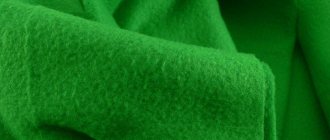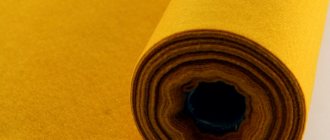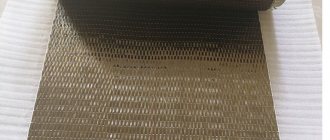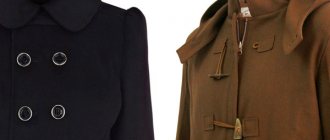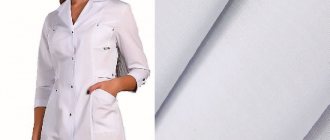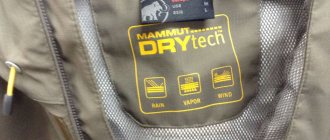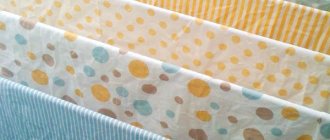Modern fashionistas are constantly looking for something to surprise and please others. Products made from crepe georgette fabric are far from new, but a common way to do this. So what is georgette fabric? This fabric was most often used towards the end of the 19th century. Then large dresses were sewn for various balls. Current fashion suggests a style such as vintage. Accordingly, no truly vintage style would be complete without georgette crepe. And modern dudes love to use such material in their images. You should consider in detail the crepe georgette fabric, description and characteristics.
What is georgette
Not everyone knows what georgette fabric is. Georgette is a thin and almost transparent fabric made from twisted threads. Most often made of silk. It comes in plain georgette or with a printed pattern. Matte colors. The peak of popularity was in the second half of the 19th century, but evening dresses were made from it before. The second peak of georgette fashion occurred in the 20s of the 20th century. And the post-war years. Short cocktail dresses were popular back then. Over time, fluffy and even multi-tiered skirts began to be made from crepe georgette. This material was also used for frills on underwear. The modern name is given in honor of a 20th century French dressmaker named Georgette de la Plante. It was originally made from tightly twisted yarn.
Crepe georgette
Nowadays georgette is used to create solid and expensive things. Crepe de Chine material emphasizes elegance. Due to the high cost, crepe georgette is no longer so popular. However, the scope of its application is still growing.
Beauty and grace of the material
History and description
Crepe georgette fabric was very popular in the second half of the 19th century. It was used to make both ball gowns and everyday light dresses. Since then, the material has been forgotten and then returned to the wave of popularity.
So, crepe georgette - what kind of fabric is it? It can be distinguished by its characteristic roughness, density, and, moreover, slight transparency. The description needs to add some toughness and shine. This material is not elastic, it does not stretch and slips a lot.
The cost of one linear meter is from 640 rubles. The price may be higher, depending on the amount of natural raw materials used in production.
Fabric Features
Products made from crepe Georges look quite vintage. The surface is slightly rough. But it feels very pleasant to the touch. There is a velvet shine. The clothes are quite dense and elastic.
Huge color palette
This material differs from other crepes in some rigidity. But thanks to the softness of the threads themselves, elasticity and airiness, no discomfort is felt.
Interesting! There is a visual effect of looseness. It is achieved through crepe knots. But the matter is translucent. This effect should not be ignored. The nodes are quite small and soft, so upon tactile contact the material seems almost smooth.
You might be interested in: Characteristics and application of asbestos fabric
One of the features of fabric is the variability of possible composition. But you need to understand that if natural materials such as viscose are added, then the cost will be higher than when synthetic materials are added.
In general, crepe georgette is an unusual material. It contains wear resistance along with airiness and lightness. This fabric produces truly vintage and original items.
Vintage things
Features of georgette
This translucent fabric was originally made from wool. Its peculiarity was a simple plain weave and the use of thin fibers with increased twist. The most common variety of this material was crepe georgette, for which a special crepe weave was used . This fabric combined a number of properties, some of which were directly opposite to each other. All varieties of georgette have the following properties:
- thinness and translucency;
- strength;
- elasticity and even some rigidity;
- matte coating.
The crepe twist characteristic of crepe georgette makes its surface grainy and even somewhat rough; it can be plain or printed. This material is usually made from silk, but, unlike other silk fabrics, it is not as slippery and not as wrinkled, but at the same time it has the ability to irritate overly sensitive skin . Natural georgette has good thermoregulating properties, breathability and hygroscopicity. In addition to silk and wool, georgette can be made from viscose, synthetics or a mixture of various fibers, including elastic. Among the current varieties of georgette, we can note such as
- degradation with a smooth change in shade;
- iridescent shade;
- crash with a “bruised” effect;
- with designer trim (metallic threads, sequins, voluminous appliqués, etc.).
All varieties of this material provide a good fit, drape beautifully and are great for various ruffles and flounces and creating voluminous silhouettes. Therefore, they have not disappeared from fashion trends for almost two centuries, although the popularity of georgette is subject to cycles and is associated mainly with current silhouettes and types of finishing. At the same time, natural silk or wool material always looks prestigious and meets the highest style criteria. However, it should be remembered that this fabric frays a lot when cutting, and therefore requires large processing allowances and careful processing of the seams. In addition, with tight-fitting styles, it can “chitch” at the seams.
Types of Georgette Fabric
Georgette fabric can be of several types: using natural materials and synthetic ones. The most commonly used materials are silk, wool, viscose and synthetics. Chiffon can also be used. At the same time, wool and silk are more common. They provide the main positive characteristics of such fabric. Crepe georgette is made using crepe weave of thin threads and twisting them.
Material using natural fabrics
The main difference between crepe georgette fabric is the different direction of twisting of the main and secondary threads. This is what gives it special elasticity and density. In addition, the weight of 1 square meter of fabric is about 70 grams.
Material using synthetic fabrics
How to wash?
Thin and transparent materials always require careful handling. Of course, the composition of the fabric is of great importance. Thus, georgette made from natural fibers always gives a slight shrinkage when washed, which is not observed in synthetic material . However, for all types of this material there are general recommendations:
- It is advisable to wash by hand using warm water and neutral soft detergents, preferably liquid;
- smooth cotton and synthetic items can be washed in an automatic gentle cycle, but no more than once every two weeks;
- When drying, the fabric must be carefully straightened; woolen items are best placed horizontally;
- Ironing is done from the inside out at a temperature corresponding to the composition of the fiber, while for natural fabrics it is advisable to use a damp pad.
Where is it used and what is sewn
Georgette crepe is an almost universal fabric. You can sew any clothes from it: blouses, skirts, dresses. But the production itself is quite complicated. Because of this, the product is worn only in exceptional cases. Crepe georgette evening dresses are most often purchased. They attract attention and evoke the admiration of others.
Skirt
Georgette crepe is also used to make original decorative items. This fabric looks quite solid in the house. However, for many this is too expensive a luxury.
Among the decor, draped curtains made of crepe georgette are especially popular. Such popularity is achieved due to the fact that high-quality material practically does not wrinkle.
Blouse
What type of fabric is this
Crepe georgette is a type of crepe fabric, most often silk, made from threads with a very strong twist, the so-called. crepe weave. The threads are twisted to the right and left in a certain alternation.
Crepe georgette colors
All crepe fabrics are characterized by slight unevenness, roughness of the front side of the material and some of its rigidity. This type of weave gives special strength and density, but also causes greater shrinkage.
The main producers of crepe georgette are: Russia and Italy, as well as China, Turkey, Ukraine, i.e. countries with a traditionally developed textile industry.
People unfamiliar with sewing often confuse the names crepe de Chine and crepe georgette. But for a professional, the difference is obvious. The former is completely opaque and contains much more natural fibres, while crepe georgette is a more translucent material with a shiny surface. And it contains a higher percentage of synthetics.
Crepe de Chine
What is crepe de chine fabric? What are its properties and parameters?
more details
Product care
Georgette crepe is a fairly sensitive fabric. Accordingly, care should be delicate. If the item is hanging in the closet, you should put a cover on it. Don't let your clothes get too dusty, as washing can damage the fabric.
It is better to dry things flat. If drying takes place outside, it is important to put the product in the shade, since silk quickly breaks down in the light.
You might be interested in this. Detailed description of tissi shirt fabric
You need to iron from the inside out, in the “Silk” mode, without steam. The most “stubborn” creases are smoothed out by steaming the product through the fabric (gauze will not work, since it is of a very rare weave, through which water particles will easily fall directly onto the product and leave unsightly splash stains).
How to wash properly
Crepe material is quite sensitive to washing. Therefore, if necessary, you should take it to the dry cleaner. If it is not possible to do this, you should wash it by hand at a temperature of 30-40 degrees.
Important! There should be no aggressive cleaning agents! Otherwise, the fabric may become discolored or deteriorate altogether.
Dress
During drying, the product must be straightened. Ideally it should hang straight. In addition, it should not be exposed to direct sunlight. Otherwise, the fabric will begin to fade.
Silk clothes should only be ironed if creases have formed on them after drying. If the fabric was hanging, then there should not be such creases. Steam should only be used to straighten the toughest creases. In this case, it is better to turn the product itself inside out. Do not spray fabric before ironing it. When spraying, water stains may remain. The fabric should only be dry.
Attention! Modern crepe georgette fabric is quite capricious. Before purchasing, you should familiarize yourself with the rules for caring for it. In addition, be sure to follow the instructions on the label.
Sundress
How to care
Crepe georgette belongs to the category of silk fabrics and needs to be handled delicately. It is recommended to dry clean natural and expensive items. Home care should begin with studying the label on the product, which indicates the composition of the fibers and recommendations for washing and ironing.
To wash items made from natural crepe georgette, it is better to use the manual method. The water should be warm (up to +30°C), and liquid detergents should be used, with a mild composition and without bleaches. When spinning and washing, avoid strong friction and compression. The wet item must be carefully wrung out and shaken off to remove moisture.
Clothes should be dried flat, on hangers or horizontally. Place only in the shade, because the sun will destroy the silk. Iron from the wrong side with a warm iron (+80°) in the “silk” heating control mode. For severe creases, steaming through cotton material is used. It is not recommended to use gauze, because through it water gets onto the fabric and leaves splash stains. For the same reason, you cannot directly spray water onto the georgette crepe from a spray bottle. It's better to take a damp iron
Positive and negative characteristics
The main positive characteristics are achieved due to the naturalness of the fibers in the material. To understand whether things made from such fabric are needed in your wardrobe, you need to consider all the pros and cons of such products.
Pros:
- Clothes made from this material will keep you warm in winter and cool in summer. The threads are thin enough to allow fresh air to pass through, but at the same time retain heat.
- The fabric is environmentally friendly, hygienic and very pleasant. It is gentle, does not prick and is almost airy.
- It doesn't slip like real silk. This effect is achieved with the help of slight roughness.
- Doesn't wrinkle. There are practically no traces left on it after the product lies on the shelf.
- Folds well into various types of draperies, corrugated and pleated. This also gives it versatility. That is, you can create various “bows”.
You might be interested in what is remarkable about the curtain material Canvas: a description of the properties of the fabric
Tunic
The disadvantages include:
- Shrinks a little after washing. Therefore, just in case, you should buy something a size larger. According to customer reviews, crepe georgette stretches a little after hanging after washing, but this is not always enough.
- Cutting and sewing are very difficult. The fabric stretches greatly and crumbles. If you buy such fabric for sewing something, then you should take it with a large supply.
Important! To prevent the fabric from crumbling so much, it should be moistened in gelatin. This will help her stay whole and save her from unnecessary difficulties.
As you can see, the advantages of crepe georgette fabric are much greater than the disadvantages. However, these disadvantages are quite significant. If you still want to have a product made from such fabric, then first of all you should decide on the size so that when the clothes shrink, they do not end up too small. In addition, you should not try to sew something yourself. It will cost much less to buy ready-made clothes.
Original dress
Advantages and disadvantages
The main advantages of silk crepe georgette are due to the natural composition of its fibers. Like any natural silk, it is equally comfortable at cold and low temperatures, very hygienic and pleasant to the touch. In addition, this fabric also has the following features:
- like all crepes, it has a rather rough surface that slips less than silks of other groups;
- wrinkles little, fits well into folds, pleating and corrugation, which allows it to be used for fashionable transparent skirts;
- allows you to create original, sustainable draperies.
As for the disadvantages, in addition to the high cost, common to all natural silks, crepe georgette has several more features.
- First of all, these include slight shrinkage after washing, so it should be decated before cutting.
- This fabric stretches and frays very much, so it is difficult to cut and sew. Obviously, this was precisely the reason why such a beautiful and effective material began to be replaced by analogues that were less capricious in processing, primarily synthetic ones.
Of course, synthetic fabrics are more affordable, but they are significantly inferior to natural materials both in quality and in appearance.
Reviews
Christina, 24 years old: “I bought a blouse made of crepe georgette. The most difficult thing to wash is. Powder cannot be used. Shrinks after washing. Of course, it looks great when worn and is pleasant to the body, but washing ruins everything. I have to wear it quite rarely, by the way, I add chiffon to the blouse; a chiffon skirt looks great with a blouse.”
Alena, 33 years old: “I took a dress made of crepe georgette fabric. The dress fit just great! Men even complimented me. She sat, stood, danced - not a single crease! Yes, there were problems with washing, but I took it to the dry cleaner and that’s it. No problem. I am delighted!"
Galya, 41 years old: “I’ve been sewing for a long time, but I have to charge double for crepe georgette. It crumbles and stretches. But it fits a woman’s figure just fine. Elegant, beautiful. It turns out not a girl, but a queen. I would advise anyone who wants to buy a finished product. Sewing is too difficult and expensive.”
Using this material, fresh images needed for modern fashion are created. Clothes made from crepe georgette fabric are well suited for various holidays and ceremonies. The dresses will also look good in a romantic setting.
What material is sewn from?
The use of thin, lightweight fabric is determined by its composition and type of finishing. A plain georgette made of pure wool or wool mixture is indispensable in the manufacture of trouser suits, dresses, autumn coats, and scarves.
Sundresses, summer dresses, blousons, and skirts are made from printed georgette satin. Curtain fabric with crepe weave has proven itself well in home textiles. When decorating premises, it is used to create canopies, airy lambrequins, flying curtains, as well as for interior decoration.
Silk crepe georgette is used for elegant translucent dresses and blouses. Chiffon georgette makes amazing evening dresses and stage outfits.


